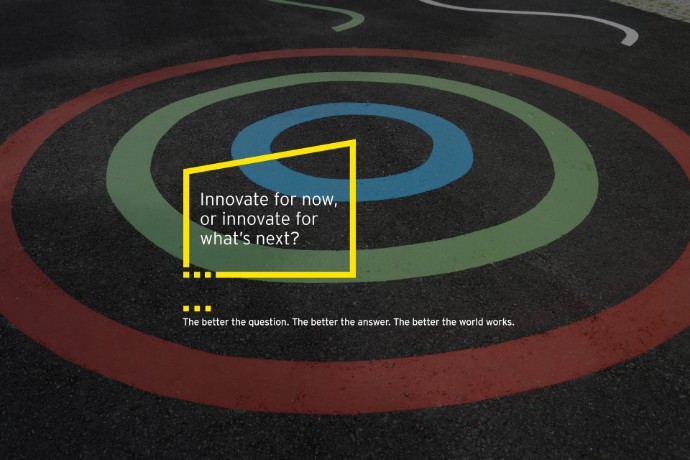
Chapter 1
Climate change and sustainability
Solving the African banking sector’s climate change conundrum. Written by Clémence McNulty
Banks are key players in the global effort to mobilise capital around ESG initiatives, connecting capital with projects and encouraging new market structures. South African banks are helping companies protect themselves against ESG risks, such as climate change and social inequality. But they face many complex sustainability issues, including balancing sustainability imperatives with Africa’s reliance on its rich natural resources and continued need for fossil fuels.
Solving the African banking sector’s climate change conundrum
- Africa only contributes 4% of all global emissions, but the continent faces disproportionate impacts from climate change, with warming almost double the global average. Unique challenges and opportunities include urbanisation, a growing youthful population, and diverse natural resources like solar energy and biodiversity balanced with significant still undeveloped fossil and mineral endowments.
- As African nations and companies seek to unlock access to sustainable funds, whilst balancing development and continuing global needs for transition fossil fuels, banks must understand their role in financing sustainable transitions. To support the needs of their clients and society effectively, banks need better data, aligned actions, clear objectives, and the right mix of technical and commercial skills.
The demand for climate action and greater sustainability is driving significant changes in the banking industry as it becomes a key player in the global effort to mobilise capital around sustainable initiatives.
Banks connect available capital with investable projects, encourage new market structures, and can help companies deliver strategies to deliver positive environmental, social, and governance (ESG) impacts such as addressing climate change and social inequality. However, banks are grappling with many complex sustainability issues, including a lack of data, standards, and transparency across sectors.
All South Africa’s banks – and many of their African counterparts - have made commitments to achieve NetZero by 2050, recognising the significant impacts of climate change. This will require decarbonising their portfolios, adopting clear investment policies for high emitting sectors and likely active participation in carbon markets and offsets. Starting on their journeys most banks have been establishing their financed emissions baseline, setting up processes to ensure climate risks and opportunities are well managed and reporting on their climate approaches in line with the requirements of the Task Force on Climate-related Financial Disclosures (TCFD). However, significant improvements are still needed to ensure progress towards long term ambitious decarbonisation and other sustainability commitments.
Moving towards sustainability
African banks have significant exposure to high transition risk sectors such as mining for some commodities and oil and gas and need to manage these effectively. This is also relevant for asset managers and other financial actors. While an immediate divestment from high-emission sectors or companies is not feasible, banks need to systematically understand their transition plans and ensure they are fit for purpose in the African context.
This includes aligning their focus on high-emitting sectors with their commitments, targets, and the needs of society, such as the Paris Agreement, Nationally Determined Contributions (NDCs), Sustainable Development Goals (SDGs), and Africa Agenda 2063.
The banking sector is also going to have to clarify its role in supporting development and ensuring clear linkages between its activities around sustainable finance and its long-term commitments. This requires better data to inform decisions and disclose to stakeholders, strong sustainability strategies centred on clear understanding of the transitions that will need to take place at regional, national, and sectoral levels, coordination across their organisations on investment processes, and capacity building to ensure all parts of the organisation can deliver on programmes.
Key role to play
Globally, the banking sector will be instrumental in achieving sustainability goals as demand for action on climate change and the huge capital requirements for this gather momentum. They may be second only to governments in accelerating climate action. However, the sector will have to overcome challenges like a lack of data, standards, and transparency, ensuring compliance with evolving regulations, and managing its own exposure to sustainability risks including the risks of reputational damage if their actions are deemed to be purely greenwashing.
By taking a proactive approach, understanding the unique challenges, and working closely with regulators and stakeholders, banks can help decarbonise the real economy and navigate the complexities within the evolving African markets.

Chapter 2
Modern incumbents are challenging the old guard
Traditional banks ready themselves to ride the digital wave. Written by Brian Wilson
Modern banks have a technology infrastructure built on modern cloud-based infrastructure that enables agility, responsiveness, cost efficiency and client experience that traditional banks are unable to compete with. An urgent and rapid change is needed to ensure that traditional banks remain competitive and responsive to client needs.
As traditional banks ready themselves to ride the digital wave:
- The South African banking industry is navigating a significant shift as it grapples with digital transformation and evolving customer expectations.
- Modern banks and fintech companies, using cloud-based solutions and advanced technologies like AI, have emerged as potent challengers to traditional banks.
- Traditional banks are hamstrung by Legacy banking systems and are unable to adapt swiftly to the demands of modern banking.
- The last decade saw software providers introduce more modern systems that enable increased agility, reduced cost to serve and improved client experience.
The South African banking industry is at a crossroads, caught in the winds of digital transformation and ever-increasing customer expectations. Traditional banks, whose systems were built and setup in the 70s for branch-centric operations, are grappling with the challenge of adapting to a new age of banking that demands agility and innovation. Today's customers no longer limit themselves to a single branch or banking channel, and the old systems are proving to be a bottleneck for the industry.
Traditional banking solutions are fraught with legacy systems and decades old thinking
Traditional banks (and their associated legacy systems) were not designed for the breadth of operations required in modern banking. Each time customers started to use ATMs, demand a wider range of products, or engage digitally, banks had to add another layer of code onto the existing systems to ensure that these features worked. These adaptations have led to a complicated, multi-layered, and outdated technological infrastructure.
New product launches under such systems can take 12 to 18 months to deploy, which is simply too slow for the fast-paced digital world. Furthermore, the complexity of these systems introduces a high risk of failure. Adding to the challenge is the fact that traditional banks are tied to expensive on-premises hardware and a high dependence on manual back-end processes, which all come with a cost, a hindrance to agility and an impact to customer experience.
Modern on-premises solutions offer some reprieve but have a long way to go
The past decade has seen the introduction a series of Modern banks and some banks undertaking a system transformation programme, all of which have been supported by so-called Generation 2 systems. These are systems (often provided by third party vendors) are installed on company-owned servers, require substantial configuration, and provide a more modern infrastructure. These systems are adapted for modern operations, help banks take products to market faster and simplify the client experience. However, they require substantial upfront capital investments and require substantial ongoing license and running costs. This significant investment and protracted timelines discourage traditional banks from embarking on a complete transformation.
Digitally and cloud first solutions offer radically improved agility and customer experience for the next generation of banks
In more recent years we have seen the emergence of new next generation banks and fintech companies in South Africa. These next generation banks, built on cloud-based technology solutions, are radically transforming the banking landscape. Their agility, innovation, and customer-centric approach, combined with a subscription-based model, are setting a new standard in banking. These technologies allow new banks to be launched in months, new product offerings to be launched in a matter of days, and updates and enhancements to be rolled out continuously.
The next generation banking entrants use advanced technologies such as artificial intelligence (AI) to enable a superior customer experience. And while many of these next generation banks are yet to reach profitability, they are responding to customer demand faster and cheaper than the incumbents. This, coupled with potential changes to the payments entry criteria in South Africa (making the barriers to entry lower), is placing a real threat to traditional banking organisations.
The time to change is now
What the new entrants have shown is that technological transformation no longer has to involve multi-year projects with massive capital investments. By learning from past programmes and leveraging the capabilities of the modern, digitally enabled and cloud first solutions, banks can achieve transformation faster and more affordably.
Transformations of this nature require a shift in mindset and strategic approach. Banks need to create a clear vision and strategy for their transformation journey. They need to ensure they have the right sponsorship, define the scope explicitly, link the delivery to tangible business outcomes, focus on delivering incremental value and proactively take their regulators on the journey to ensure the successful outcome and delivery of the transformation.

Chapter 3
A need for ecosystem thinking
Ecosystem banking: how serving the greater good can be good for the bottom line as well. Written by Sean Berrington
Ecosystem models are rapidly transforming the banking industry by challenging the roles that they play in the ecosystem and creating new opportunities for banks to offer value-added services to customers. Ecosystems bring together a range of players, including banks, fintech companies, and retailers, to provide customers with a range of services and products.
Ecosystem banking: How serving the greater good can be good for the bottom line as well
- Ecosystem banking is all about moving beyond traditional banking models and creating unique opportunities that benefit the entire ecosystem.
- This is particularly relevant as we see a wave of collaboration in the financial services industry and a greater awareness of the broader societal and environmental impacts of banking.
- Banks that adapt successfully to the ecosystem approach can potentially unlock exponential growth and profitability.
In its most basic form, an ecosystem is an environment where different organisms work together and interact in a mutually beneficial way. In business, an ecosystem is where a series of parties work together to serve a chosen community holistically. It is dynamic and adapts to the needs of the ecosystem, however, its purpose is to ensure that the needs and wants of the ecosystem are holistically met.
What’s critical for banks is to first and foremost understand their role in the ecosystem, before looking for ways to monetise any opportunities. If they first focus on building relationships, and creating value for their customers and stakeholders, they will ultimately drive increased revenue and profitability. But that’s the outcome of the ecosystem approach, not the driver.
Ecosystem thinking also includes a greater awareness of the broader societal and environmental impacts of banking operations. Banks are looking to align their investments with sustainability goals, and to provide financial solutions that promote financial inclusion and access to capital for underserved communities.
We’re seeing a wave of collaboration in the financial services industry. Traditional banks are increasingly working with FinTech’s and other new market entrants to deliver more comprehensive and innovative solutions to customers, while also expanding their customer base and revenue streams.
So, what is ecosystem banking?
We see four important business models in the modern banking world. In order to understand what ecosystem banking is, we believe it is important to define and differentiate between the four distinct different models.
Digital-enabled banking: Modern digital banking solutions, applications, and platforms all enable banking in a broader ecosystem. Using digital platforms and Application Programme Interfaces (a means to connect systems in a standardised manner), companies can provide products to distribution partners, facilitating banking beyond traditional engagement and access mechanisms. This forms the starting point of ‘open banking.’
Embedded finance: Financial offerings embedded into non-financial business’ services enable such organisations to provide financial support. While this offers convenience, it does not yet represent ecosystem banking.
Banking-as-a-Service (BaaS): BaaS allows providers to offer their licenses to other banks or third-party providers, providing quicker and cheaper access to banking solutions. While this model is effective, it is not true ecosystem banking.
Ecosystems: Enabling an Ecosystem requires the provider to offer a solution that the Ecosystem holistically benefits from, that enables connectivity and enables the ecosystem to thrive. To do this a clear understanding of how the identified solutions will support the ecosystem is required, and ongoing adaptation of the solution is required to continue to ensure that the Ecosystem benefits from the offering. There is a misconception that digital banking, embedded finance, and banking-as-a-service is ecosystem banking. Whilst you could argue that these are enablers of Ecosystem banking, they are in fact fundamentally nothing more than a means to engage and in the absence of a solution or offering that is for the mutual benefit of the ecosystem, they become nothing more than a platform or channel.
Gaining insight
To successfully operate within an ecosystem, a bank needs a clear understanding of its role, the value it brings and gets from the ecosystem. A wrong approach can lead to a loss of trust, brand reputation, and costs. Those who get it right, though, will experience a growth in trust, traction, and profitability, while contributing to the wellbeing of a broader ecosystem and society.

Chapter 4
The race for talent
The competition for talent is rapidly reshaping the banking industry, as banks must attract and retain the best talent to remain competitive. Written by Michelle Kotze and Natasha Diakides
The competition for talent is rapidly reshaping the banking industry, as banks must attract and retain the best talent to remain competitive. The need is now – to reorchestrate talent, investing in people and paying particular attention to diversity and the value proposition for current and future employees.
Map skilling is key to successful transformation. Most banks know they need software developers and coders, but data engineers, data scientists and data architects, as well as those well-versed in agile practices, such as scrum masters, are also vital. Individuals with technical and business expertise are invaluable, as are softer skills such as communication and empathy. Currently, 44% of executives say their organisation had the digital skills and mindset needed for transformation, according to EY research.
Once leadership has mapped out the required skills, it’s imperative that they work with the Chief Human Resource Officer, Chief Operating Officer, and Chief Technology Officer to determine the optimal mix of reskilling, recruitment, contingent workers and external specialists and consultants to secure these for the business. Technology and other skills needed for transformation are in short supply, so there is a strong emphasis on investing in existing employees to develop the required mindsets and skills.
Banks may also need to rethink their talent propositions in order to attract and retain top talent. Articulating the transformation trajectory on first contact with prospective new hires is key, as is communicating their potential role in that transformation.
Culture flows from the top down
The importance of culture cannot be overstated. Senior leadership needs to define the culture and associated behaviours that best support the transformation vision. These will often involve an unfamiliar level of openness to collaboration, new ideas and experimentation and, as a consequence, new levels of risk-taking. It is also vital to instill a culture of accountability, whereby those charged with leading and delivering change take ownership of execution.
However, only around four in 10 executives agreed that their organisational culture had a sense of urgency about change and transformation. The same proportion agreed that their culture encouraged innovation and new thinking. Incentives and performance management may need to be revised to encourage culturally aligned behaviours.
Moreover, the right cultural balance will only be achieved if it is always demonstrated by executives and baked into change management programs. Organisations that underperform when it comes to transformation highlighted limited support from the workforce as the main reason.
Bank’s seeking to transform need to constantly work at it, practise courage and lean in as the going gets tough. Organisations that ensure there is a willingness to be courageous, build and encourage a deeper understanding of the emotional state of the workforce have a greater chance of success.
Don’t forget diversity
Future-fit transformation teams must be diverse in terms of gender, ethnicity, nationality, and experiences. This will ensure that a range of perspectives are available. However, it’s not enough to have a diverse room. People from different backgrounds need to be encouraged to voice their opinions, especially if they are among the more junior team members.
My team does lots of work on psychological safety, which is needed to ensure that people are encouraged and have the freedom to say what they want,” explains the Group Head of Transformation at a multinational bank. “This is vital because the people who really know what the issue is are often not the most senior people sitting around the table. This is a key element of diversity. All studies I have seen say that teams that feel psychologically safe deliver better outcomes.
Key questions for banks as they look to re-orchestrate talent and invest in people:
- Do we have a targeted workforce strategy to attract, develop and retain the right talent?
- How are we building our youth for a better future?
- How do we define and embed a transformative continuous improvement culture in a hybrid working environment?
- Are our transformation teams diverse with respect to gender, ethnicity, nationality, and experiences?
- How can we obtain the optimal mix of skills in the right locations to develop and retain talent in a cost-efficient manner?

Chapter 5
Digital assets are disrupting the status quo
Digital assets offer brave new world for the banking sector. Written by Kavi Pather
Incumbent banks have been increasingly challenged in recent years by fintech companies and challenger banks, who are transforming the industry by providing more innovative and efficient customer experiences. The tech challengers are raising the bar for customer expectations, forcing traditional banks to adapt and innovate to remain competitive.
Digital assets offer brave new world for the banking sector:
- Digital assets are driving new measures of value in the banking industry – and bringing with them new challenges and imperatives.
- The market supporting digital assets is projected to be worth $27 trillion by 2027, with 10% of global GDP expected to be stored on blockchain technology.
- The banking sector is pivoting its business models to become the trusted custodian of all assets in the future, including digital assets.
The digital revolution is accelerating, creating a new paradigm in the banking industry. Technology is revolutionising the way people interact, as transactions move from the ‘real world’ to the ‘digital world,’ the challenge for banks is to remain central to facilitating transactions and building trust.
With the volume of technologies, platforms, and jargon out there it is very easy for these to be wrongly conflated. If the banking sector is to take the opportunity to become the trusted custodian of all assets for its customers, it’s important to understand how each different technology and use-case functions, and how they work together.
Digital assets: more than crypto
There’s a popular misconception that digital assets are largely cryptocurrencies. In reality, digital assets represent anything of value that can be assigned a unique code and stored digitally. This could be anything from an erf reference number, a photo you’ve taken, or even a share certificate (non-fungible tokens, NFTs).
Traditionally, these assets were safeguarded in highly secure environments, where safety and ownership relied on the security and trustworthiness of the hosting company. But security breaches have started eroding consumer trust in these traditional storage methods. Critically, consumers need assurance that their digital assets are secure, ownership is retained, and the value is preserved.
We’ve started to see an exponential uptake in the number of distributed ledgers use-cases, but few have seen scale in customer usage and have been able to commercialise. Analysts predict that the market supporting digital assets will be worth $27 trillion by 2027, with 10% of global GDP expected to be stored on blockchain technology. However, the reality is still some way off this.
The tokenisation of asset classes has the potential to revolutionise how markets operate, with reduced operating costs, new forms of liquidity, and programmability. NFTs and digital identities will enable new classes of valuable collateral, creating the foundation of the metaverse.
At the same time, decentralised finance (DeFi) will put pressure on traditional financial systems, especially exchanges, derivative issuers, and lenders. This will see regulators look to provide clarity and greatly increase supervision of digital assets, making digital assets and crypto technology more viable.
There’s no doubt that digital assets have the potential to transform financial services. Public blockchains will become the transactions and settlement layer for exchanges of value globally.
About turn
The emergence of fintech companies and challenger banks is transforming the banking industry by providing more innovative and efficient customer experiences, forcing traditional banks to adapt and innovate to remain competitive, with the risk of their diminishing into irrelevance if they don’t.
Banks are currently viewed as a token of trust within the societies in which they operate. They are trusted to look after our monies, our personal data, and our investments, they are trusted to be there when we need them and are trusted to be responsible. This is a key strength of the banking industry and one that has stood as a cornerstone of its existence since its formation hundreds of years ago. Banks must take the opportunity to become the “trusted owner” of digital assets.
They must pivot their engagement models to one where they manage digital assets on customer’s behalf. So then how should bank’s pivot to becoming a trusted custodian of all assets?
Define a clear strategy: A clear and focussed strategy is needed on the management of these assets, with clear intent on what customer needs are, how they should be managed and how investment will be directed to ensure the meeting of these customer needs,
Rethink business models: This requires the (re)definition of the various types of assets, and a (re)acknowledgement of role needing to be played in ensuring the safety and security of these assets,
Work with your regulators: A proactive approach is needed to engage with and walk the journey with your regulators. This will ensure that trust is built throughout the process,
Rapidly progress POC’s: Focussed and measured investment should be made to rapidly progress a series of “proof of concepts” with the intent of solving specific customer problems.
Embed solutions into all assets: This should include a reassessment of how all assets are managed, with the intent of embedding practises and lessons learned into all assets.
Questions that banks should be asking themselves include:
What customer needs exist?
- Do we have the right talent pool to evolve digital assets?
- What growth strategy exists to help drive the adoption of digital strategies?
- What technologies are needed to enable a robust and secure digital asset strategy?
- What are the implications of Central Bank Digital Currencies (CBDC’s) for the future of banking?
Ultimately, banks that successfully manage this transition will see a seamless interaction between digital and traditional assets and a radical shift in client engagement. They will also future proof themselves against disruptions from fintech companies and modern incumbents.

Chapter 6
The expanding regulatory perimeter
Technology helps banks manage expanding regulatory perimeter. Written by Gail Moshoeshoe
New regulations are constantly being introduced to address issues such as climate change, cybersecurity, and financial stability. Regulatory changes are expanding the regulatory perimeter, with regulators exerting greater control over banks and their operations.
Technology helps banks manage expanding regulatory perimeter:
- Megatrends like climate change, cybersecurity, and financial stability are driving a rapidly increasing regulatory perimeter for the banking sector
- Compliance and risk management offer both significant challenges and major opportunities for the sector
- The use of modern technology, like generative AI and digitisation, is critical to the ability of banks to navigate the new regulatory landscape, while seizing opportunities for innovation and growth
- The expanding regulatory perimeter is exerting a profound influence on the banking industry's markets and models. Emerging regulations are addressing critical issues such as climate change, cybersecurity, and financial stability – but they’re adding layers to the regulatory landscape.
- As a result, banks are increasingly having to adapt to this new landscape. This includes investing in compliance and risk management, fostering strong relationships with regulators, and developing regulatory frameworks that support innovation and growth.
Dealing with pressure
The challenges presented by the expanding regulatory perimeter are twofold – and are creating both pressure and opportunities. On the one hand, increasing regulatory demands are putting banks under immense pressure to maintain compliance and ensure operational alignment with new regulations.
On the other, modern technology – like generative AI - and digitisation are emerging as potent tools to reshape the industry. These technologies can streamline compliance and risk management processes to enhance the efficiency and effectiveness of banks in a digitally driven marketplace.
Generative AI assists banks in identifying and addressing compliance risks swiftly and accurately. It analyses vast amounts of data from multiple sources, identifying patterns and trends and flagging potential compliance issues. Automating data analysis and monitoring allows banks to stay abreast of regulatory changes and adapt quickly to new requirements.
Digitisation helps banks manage the expanding regulatory perimeter. A digitised operation improves the transparency and accuracy of reporting and compliance processes, enabling quicker identification and resolution of potential compliance issues. Digitisation also reduces operational costs and improves efficiency. Automated data entry and analysis frees up staff for higher-level tasks, like risk management and strategic planning.
Framework enhancement
Technology also helps banks develop robust regulatory frameworks that promote innovation and growth. It provides deeper insights into the regulatory landscape and uncovers overlooked opportunities for innovation and growth.
Generative AI, for instance, can help identify novel product development opportunities. By analysing customer data and market trends, it can guide the development of new, compliant products and services that cater to customer needs. Digitisation reduces the time and resources needed to introduce new products and services, keeping banks competitive.
Rethinking traditional approaches
The bottom line is that while the expanding regulatory perimeter is a major challenge for the banking sector, it also offers substantial opportunities. Using technology smartly will be pivotal in streamlining compliance and risk management processes, cutting operational costs, and building robust regulatory frameworks that facilitate innovation and growth.

Chapter 7
High costs make it hard to compete
Traditional banks battle embedded costs as nimble new entrants make hay. Written by Marius Van den Berg
The banking industry is being transformed by technological advancements, changing consumer preferences and nimble new entrants. One of the biggest challenges that traditional banks face in trying to adapt is stubbornly high operating costs, which include maintaining physical branches and legacy IT systems.
Traditional banks battle embedded costs as nimble new entrants make hay:
- Fintech startups and digital-first banks are disrupting the banking sector with their agility and low operating costs.
- At the same time, traditional banks, particularly in South Africa, are grappling with high costs due to legacy operations and systems.
- By learning from the technology approach of new entrants, traditional banks can transform their infrastructures to restructure themselves to remain competitive as neo-banks gather critical mass.
New entrants like Fintech start-ups and digital-first banks are turning the global banking sector on its head. And while they grab all the attention – and the VC funding - traditional banks are grappling with legacy systems and operating models that result in stubbornly high operating costs, hindering their ability to compete effectively.
Closer to home, traditional South African banks have some of the highest cost-to-income ratios in emerging markets. These costs are the result of years of complex operations, a large physical branch footprint, and an enduring demand for cash. This complexity not only inflates costs, but also creates points of failure and curtails responsiveness, making competition with agile modern banks challenging.
Cost structures of modern banks
Many major local banks built their current infrastructure in the late 70s and 80s. This has resulted in redundant and duplicative processes, layers of complexity, and a largely immovable cost base where over 70% of costs are fixed. Their efforts to reduce these costs have been largely tactical, yielding marginal benefits and often coming at the expense of customer-centric activities.
In contrast, FinTech’s and digital-first banks have a fundamentally different cost structure. This is because of automated operations, modern integrated systems that increase operational capabilities and reduce costs, and non-traditional branch infrastructure that significantly reduces customer servicing costs. Accordingly, these banks enjoy simpler systems, fewer points of failure, improved customer experience, and lower costs.
A blueprint for change
Numerous organisations have attempted cost transformation programmes and have failed; however, all of these are attributed to lack of fundamental cost reform. To truly transform their cost structures, banks must be patient, prioritise ruthlessly, and put in significant effort. Some aspects that can assist with this change include:
Front to back design: Comprehensive process mapping, starting with customer engagement and ending in the General Ledger (GL), can reveal inefficiencies, points of failure, and opportunities for optimisation. Coupled with process redesign, this can generate substantial cost savings.
Prioritised simplification: Simplifying complex process landscapes, functions, and systems can reduce friction, limit failure points, decrease costs, and improve the customer experience.
Organisational redesign: A shift towards placing resources and decision-making closer to the customer can enhance agility, reduce hand-offs, and decrease service costs.
More than costs
While zero costs are an unattainable goal, reducing costs remains a vital agenda item for traditional banks. Successful cost transformations yield not only reduced costs but also improved customer service, increased agility, and fewer points of failure. The quest for cost reduction raises important questions for your banking institution. What cost reduction attempts have been made, and were they successful? Is systemic simplification a priority? What benefits beyond cost savings are anticipated? If action is necessary, how will you prioritise and secure support for these changes? And ultimately: What cost base is needed to remain competitive in future?

Chapter 8
The frictionless cross border payment conundrum
Africa’s cross-border payments challenge remains a massive opportunity for banks. Written by Sean Berrington and Claud Joshua
Achieving frictionless cross-border payments is particularly relevant in Africa, which has a wide range of currencies and regulatory frameworks, making cross-border payments complicated and expensive. The traditional system of intermediaries and correspondent banks can result in delays and high transaction fees, particularly for small businesses and individuals. This has led to a rise in the use of mobile money and digital payments, but the need for a more seamless and affordable cross-border payment system remains.
Africa’s cross-border payments challenge remains a massive opportunity for banks:
- Achieving frictionless cross-border payments is massively relevant in the African context, with remittances critical to the economies of many rural areas and regions.
- Despite the growing number of innovative payment platforms, no existing solution has successfully integrated the key factors of accessibility, affordability, and trust.
- Creating a seamless cross-border payments solution is a major opportunity for banks to extend their footprint and grow their customer base.
The ability to process a seamless (cross border) payment is a vital enabler of the migrant workers in and around Africa. The working class who migrates to the major working metropolitan areas must find ways to send money back to their relatives in rural areas, often from other countries. The current means are unreliable and expensive and are a vital lifeline of the rural communities that they support.
That’s why the challenge of achieving frictionless cross-border payments is particularly relevant in the African context. The mobile money space is one of the most hotly contested sectors in the African start-up scene, but the fact is that no single player has yet managed to solve the perennial problem of making payments that are accessible, affordable, and trustworthy.
Part of the problem is that the continent has varying degrees of banking infrastructure maturity, an extraordinarily diverse range of currencies and regulatory frameworks, making cross-border payments complicated and expensive. The traditional system of intermediaries and correspondent banks can result in delays and high transaction fees, particularly for small businesses and individuals.
There has been a sharp rise in the use of mobile money and digital payments in recent years, particularly in countries such as Kenya and Nigeria. However, there is still a need for a more seamless and affordable cross-border payment system that spans the continent.
Initiatives such as the African Continental Free Trade Area (AfCFTA) and the Pan-African Payment and Settlement System (PAPSS) have been launched to address this issue, among others. But significant investment and collaboration between African governments and the private sector is necessary to unlock the value created by these agreements and to achieve a truly frictionless cross-border payment system in Africa.
The need for change
The current fintech landscape paints a paradoxical picture. On the one hand, we’re seeing an explosion of innovative payment platforms, each promising to transform the payment landscape, but few are yet to solve the underlying issues.
Despite all the advances – and billions of dollars of venture capital funds, all looking for the next big payments ‘unicorn’ – there’s a distinct lack of seamless cash flow across these platforms.
FinTech’s have largely centred their efforts on designing sophisticated, quick transaction solutions. Currently, no payment platform has successfully integrated all three crucial factors - accessibility, affordability, and trust - into a single comprehensive solution that would truly redefine the cross-border transaction space. Many have addressed two out of three. The perfect three remains elusive.
This unfulfilled need for genuinely frictionless payments presents a significant opportunity for banks looking to enhance their operations. To crack this puzzle, they should start by truly understanding the needs of their customers and tailoring a solution accordingly.
Summary
It is evident that banks that are best prepared to adapt to industry trends will be the ones that thrive in the future, experience successful transformation, and maintain relevance in our rapidly evolving society.


